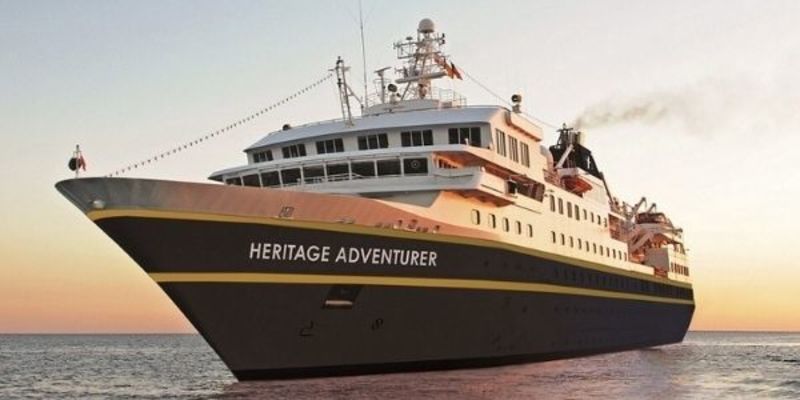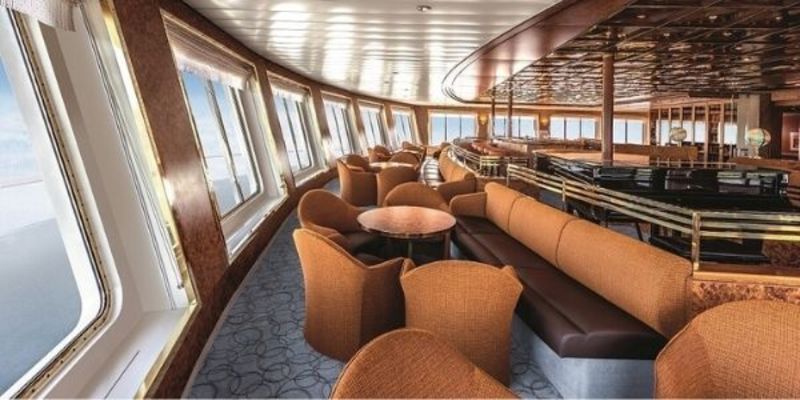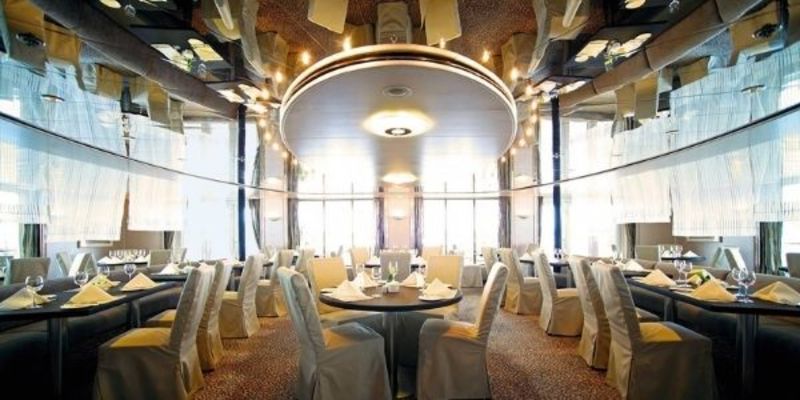During our time in the Ross Sea region, we will visit the highlights of Antarctica’s most historic region. Due to the unpredictable nature of ice and weather conditions, a day-by-day itinerary is not possible. The Captain and Expedition Leader will assess daily conditions and take advantage of every opportunity to make landings or send you out in the Zodiacs. Our programme emphasises wildlife viewing, key scientific bases and historic sites, as well as the spectacular scenery of the coastal terrain, the glaciers and icebergs of the Ross Sea. Whilst specific landings cannot be guaranteed, we hope to visit the following:
Cape Adare: Cape Adare’s bold headland and the Downshire Cliffs greet us as we approach Cape Adare – ice conditions permitting – at the tip of the Ross Sea, the site of the largest Adelie Penguin rookery in Antarctica. Blanketing the large, flat spit which forms the cape is the huge rookery which now, at the height of summer, numbers over one million birds – an absolutely staggering sight. You will never forget your first experiences in a ceaselessly active and noisy ‘penguin city’, where the dapper inhabitants show no fear of their strange visitors. Our naturalists will point out various aspects of their lifestyle and, by standing quietly, one may observe the often comical behaviour of the penguins, courtship displays, feeding ever-hungry chicks, territorial disputes and the pilfering of nest material. Surrounded by a sea of penguins we will find Borchgrevink’s Hut, the oldest in Antarctica, an overwintering shelter for the first expedition to the continent in 1899. It is a fascinating relic of the ‘Heroic Age’ of Antarctic exploration and we are able to inspect the interior which still contains artefacts of the early explorers. One thousand feet up in the hills behind Cape Adare is the oldest grave in Antarctica,
that of 22-year-old Nicolai Hansen, a member of Borchgrevink’s expedition.
Cape Hallett: The enormous Admiralty Range heralds our arrival; wild and extraordinary, the mountains rear up towering out of the sea to over 4,000-metres high and are bounded by colossal glaciers. We make our landing at an abandoned base site, now home to large numbers of Adelie Penguins and Weddell Seals.
Franklin Island: This rugged island, deep in the Ross Sea, is home to a large Adelie Penguin colony and other nesting seabirds. We will attempt a Zodiac landing near the rookery as well as exploring the coastline. If a landing is achieved and
weather conditions are suitable there will be an opportunity to explore this remarkable island.
Possession Islands: These small, rugged and rarely visited islands lie off the shore of Cape Hallett. An Adelie Penguin rookery, numbering tens of thousands of birds, blankets Foyn Island. Observe their busy and sometimes humorous activities, with the Admiralty Mountains forming a superb backdrop across the water.
Ross Ice Shelf: The largest ice shelf in Antarctica, the Ross Ice Shelf is also the world’s largest body of floating ice. A natural ice barrier, at times it creates hazardous weather conditions, with sheets of snow blown at gale force by the katabatic winds coming off the polar ice cap. Just 1,287 kilometres from the South Pole, this daunting spectacle prevented many early Antarctic explorers from venturing further south. From the Ross Ice Shelf we cruise eastward along the shelf front, with its spectacular 30-metre high ice cliffs, which sometimes calve tabular icebergs.
Ross Island – Mount Erebus/Cape Bird/Shackleton’s Hut/Scott’s Hut: At the base of the Ross Sea we arrive at Ross Island, dominated by the 3,794-metre high volcano, Mt Erebus. The New Zealand Antarctica programme maintains a field station at Cape Bird, where scientists study many aspects of the region’s natural history, including the large Adelie Penguin colony. At Cape Royds we visit Sir Ernest Shackleton’s hut, built during the Nimrod polar expedition of 1907-1909. Lectures explain many facets of Shackleton’s amazing expeditions. He was possibly one of the greatest, and certainly one of the most heroic of the Antarctic explorers. Though the legendary explorers are long gone, the area around the hut is far from deserted, having been reclaimed by the original inhabitants of the area – thousands of Adelie Penguins in the world’s southernmost penguin rookery. Also found on Ross Island is Cape Evans, the historic site of Captain Scott’s second hut, erected in 1911 and beautifully preserved by the Antarctic Heritage Trust. It stands as testimony to the rigours faced by pioneering explorers. Inside the hut we will witness the living conditions almost exactly as they were when Scott, Wilson and
Ponting occupied these quarters. Behind the hut, Mt Erebus looms above with its plume of white smoke spiralling up from the stillactive inferno in its bowels.
McMurdo and Scott Base (including Scott’s Discovery Hut): These are always on our wish list but ice, weather and operational requirements for the National Programs icebreaker activities sometimes prevent us from visiting, especially on the
January expedition. Our February expedition is generally more successful but not guaranteed.
Terra Nova Bay: Statzione Mario Zucchelli, an Italian summer research station, is an interesting shipping container construction. The friendly scientists and support staff here are always most hospitable and enjoy showing us around their
lonely but beautiful home. The Italians conduct many streams of scientific research and also claim to have the best ‘espresso’ in Antarctica! Nearby is the German base, Gondwana Station, which is used occasionally and the South Korean station, Jang Bogo and on Inexpressible Island, is China’s fifth Antarctic base, Qinling Station.
































